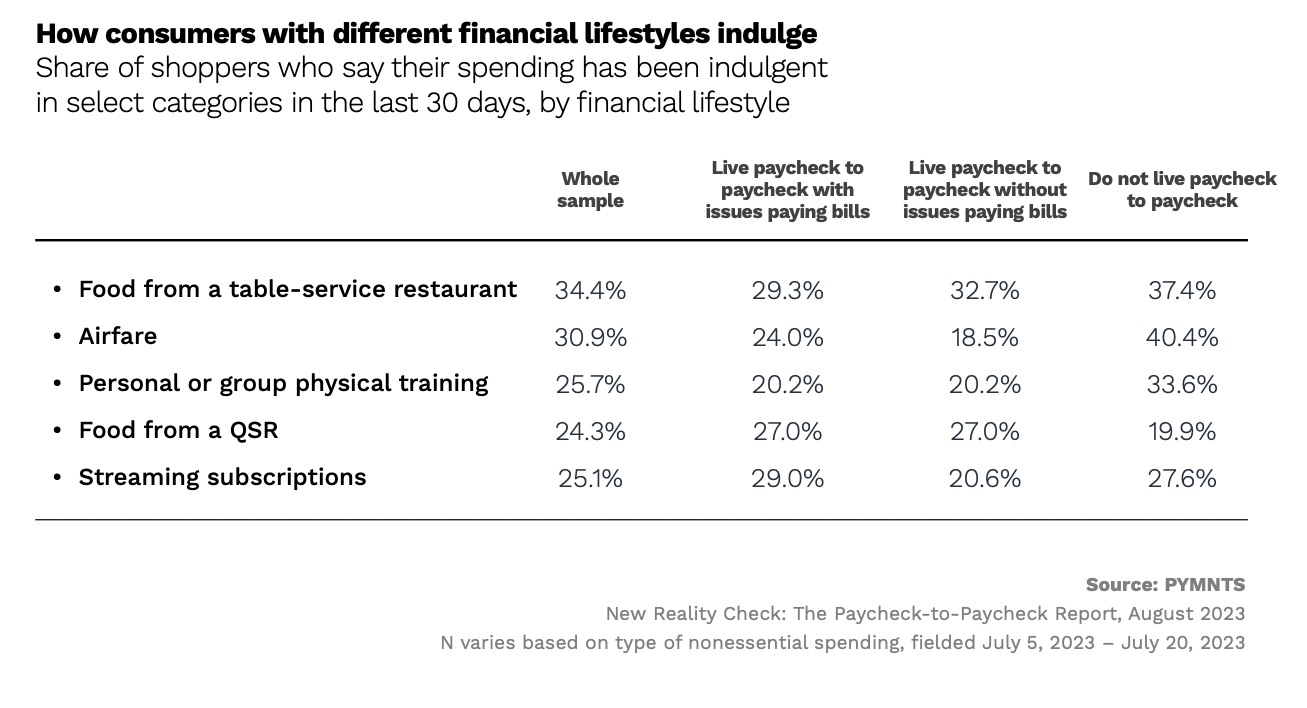
As consumers manage their food spending amid budgetary pressures, those with cash to burn are happy to splurge on table-service dining, while those without a financial safety net are more cautious in how they spend on dine-in.
For the latest installment of the series “New Reality Check: The Paycheck-to-Paycheck Report,” created in collaboration with LendingClub, PYMNTS Intelligence surveyed than 3,400 U.S. consumers to understand the impact of nonessential spending on consumers’ ability to manage expenses and put aside savings.
The results revealed that when it comes to table-service dining, those with savings to fall back on are more likely to treat themselves. Specifically, 37% of consumers who do not live paycheck to paycheck reported that their spending on food from a table-service restaurant had been indulgent in the previous 30 days. Conversely, only 33% of those who live paycheck to paycheck without issues paying bills and 29% of those who live paycheck to paycheck with issues paying bills said the same.

Full-service restaurant (FSR) chains are noticing differences in how consumers spend depending on their financial situations.
Take, for instance, Darden Restaurants, parent company of Olive Garden among other popular FSR brands. The company noted on a June earnings call that lower-income consumers are pulling back relative to last year, whereas higher-income consumers are not.
“We’re seeing that lower-income is above pre-COVID but still below last year, whereas higher-income [is] flattish to last year or similar to last,” Chief Financial Officer Raj Vennam commented at the time.
Similarly, Chili’s Grill and Bar parent company Brinker International has seen high-income consumers more willing to splurge than their low- or middle-income counterparts.
“From a cohort standpoint, the low-end customer is hanging in there,” CEO Kevin Hochman said on an earnings call last month. “We haven’t seen any change in frequency quarter to quarter. The high-end customer, or the higher-income customer, is actually coming more often, and then that middle ground, we’ve seen a little bit of fall off.”